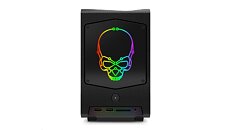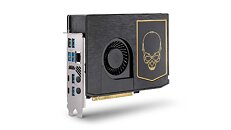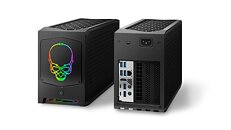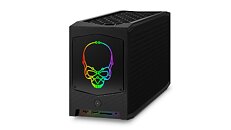XMG Announces APEX Laptop Family with up to Ryzen 9 5900HX and GeForce RTX 3070 Processors
With the 15.6 and 17.3 inch XMG APEX gaming laptops, XMG is positioning a new model series below its own high-end range consisting of the NEO and PRO series. These new laptops combine mobile AMD eight-core processors up to the Ryzen 9 5900HX with NVIDIA GeForce RTX graphics cards up to the RTX 3070. The company is simultaneously introducing the XMG FOCUS, a new product series in the entry-level segment. Intel's Core i7-11800H and an NVIDIA GeForce RTX 3050 Ti offer decent gaming performance, while good connectivity and memory round off the overall package. All four new models feature an IPS display with 144 Hz.
Until now, the XMG APEX 15 in the older E20 generation represented uncompromising desktop CPU performance, with processors up to the Ryzen 9 3950X in a laptop. Although XMG is already working on a direct successor under a slightly different name, it is unleashing the XMG APEX 15 and APEX 17 of the M21 generation for the time being with the currently fastest eight-core mobile processors from AMD. The laptops are available with an AMD Ryzen 7 5800H as well as with the slightly faster Ryzen 9 5900HX from the 54 watt TDP class, as well as with an NVIDIA GeForce RTX 3070 or RTX 3060 in the respective maximum TGP configuration (RTX 3070: 125 watts plus 15 watts Dynamic Boost 2.0; RTX 3060: 115 watts plus 15 watts Dynamic Boost 2.0).
Until now, the XMG APEX 15 in the older E20 generation represented uncompromising desktop CPU performance, with processors up to the Ryzen 9 3950X in a laptop. Although XMG is already working on a direct successor under a slightly different name, it is unleashing the XMG APEX 15 and APEX 17 of the M21 generation for the time being with the currently fastest eight-core mobile processors from AMD. The laptops are available with an AMD Ryzen 7 5800H as well as with the slightly faster Ryzen 9 5900HX from the 54 watt TDP class, as well as with an NVIDIA GeForce RTX 3070 or RTX 3060 in the respective maximum TGP configuration (RTX 3070: 125 watts plus 15 watts Dynamic Boost 2.0; RTX 3060: 115 watts plus 15 watts Dynamic Boost 2.0).



















































